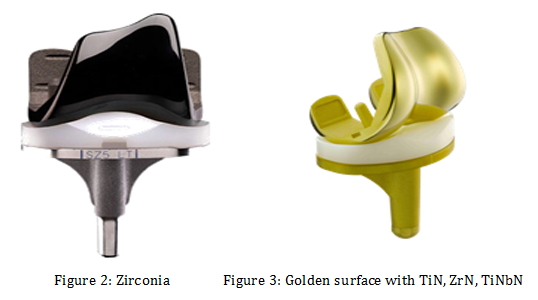Metal Allergy in Total Knee Replacement
Metal Allergy in Total Knee: All you need to know
Metal and cement component allergy is a poorly understood concept and its implications on total knee replacement surgery are also unclear. But it surely exists! What not known is how often allergic reactions cause problems for people with metal joint implants. As a Surgeon it is my duty to inform my patients about this entity in brief, simple and easily understood way, at the same time steering away from too much scientific and conflicting details that may create panic or undue anxiety.
Knee and hip implants currently available are made of metals that are durable, inert and remain in body without significant corrosion. Chromium, cobalt, Nickel, titanium and molybdenum are the commonest of metals found inside the implants in varying combinations and proportions. Sensitivity to metals is known, particularly to Nickel, which is common in several objects and substances of daily and working life. Symptoms ascribed to metal hypersensitivity may include pain, swelling, cutaneous rash, patient dissatisfaction, and loss of function.
Can we test it?
Yes. Tests are available to check the individual sensitivity to metals.
- Skin Patch Test: The most commonly used test to diagnose a metal allergy is skin patch testing. This has limited availability in India. Very small amounts of various metals are placed on your skin and then covered with a patch. After a couple of days, your doctor removes the patches. If the area is irritated, you are likely allergic to that metal. Skin patch testing is not 100% accurate, though. It is possible to have a false negative or false positive result. This means the test finds that you dont have an allergy when you actually do, or vice versa.
- Blood Tests (not available in India)
- a. Lymphocyte Proliferation Test for Nickel (Ni-LPT). This test has been validated against the skin patch test , but there is limited research to confirm its effectiveness.
- b. LTT - MELISA (memory lymphocyte immunostimulation assay). It also looks for a white blood cell reaction against the possible metal allergens. But the MELISA test has not been validated against patch testing.
Why not test everyone, before Joint replacement Surgery?
Testing before joint replacement surgery isnt recommended for everyone
- Incidence of Metal allergy is low
- Limited geographical availability of Screening Test
- Poor sensitivity and specificity of tests
- High cost
- Risk of creating first exposure with Patch test: The same phenomenon (T-cell response) that provokes a response can theoretically induce sensitivity in people
Who should undergo sensitivity testing, before undergoing Implantation?
- If you have had a skin reaction to metal jewelry or artificial ornaments in the past, you probably should be tested.
- In a patient after TKR surgery with unexplained painful knee, if laboratory tests and radiologic findings indicate no loosening, infection, or other tissue abnormalities should the surgeon consider metal hypersensitivity
Total Knee Options in presence of Metal sensitivity
If patch testing or LPT / LTT find high reactivity, one should explore options for avoiding the reaction-producing metal or traditional Cobalt Chrome implants (Figure 1).

Some alternative bearing surfaces currently available are
- Zirconia (oxidized zirconium) the Zirconium metal surface is transformed into a ceramic layer of oxidized zirconium or zirconia (Figure 2)
- Titanium Nitride coated onto the surface of a titanium-alloy femoral component (Figure 3)
- Zirconium nitride or Titanium Niobium Nitride ceramic surface coating applied to a cobalt chrome alloy Femoral component (Figure 3)
- Delta ceramic implants (currently not available commercially).

These bearings used with an all-polyethylene or titanium alloy or zirconium nitride coated tibial component will minimize the risk of Co, Cr, and/or Nickel reaction. However, this does not preclude the risks associated with nickel and other metallic byproducts that could emanate from the stainless steel instrumentation during implantation. These components offer an added advantage of better wear resistance and may provide better longevity.
To conclude, metal sensitivity is rare and no large-scale evidence exists that implicates preexisting metal allergy as a cause of implant failure in people who received components containing metal(s) to which they are reactive. Testing should be reserved for patients with history of metal allergy and use of alternative bearing surface may be considered in positive or suspected cases.

Dr. Aman Dua
M.S. Orthopedics (AIIMS, New Delhi), D.N.B. Orthopedics, M.N.A.M.S., P.G.D.H.M.
Director - Joint Replacement
Fortis Escorts Hospital, Delhi




